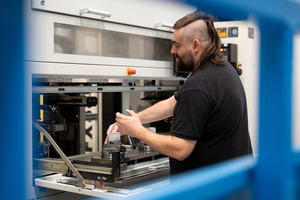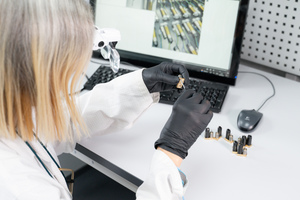
 |
Charlotte Stonestreet
Managing Editor |
| Home> | POWER TRANSMISSION | >Gearboxes | >Beyond standard solutions |
| Home> | MACHINE BUILDING & ENGINEERING | >Machinery | >Beyond standard solutions |
Beyond standard solutions
23 June 2025
Dave Walsha explains how custom gearboxes are engineered to support and enhance specialised machinery design and function

FROM ROBOTIC arms on production lines to life-saving surgical tools and compact actuators in aircraft, specialised machinery relies on gearboxes to deliver precise, consistent power exactly where and when it's needed.
By controlling speed, torque and direction, gearboxes ensure that motors perform efficiently, and that motion remains smooth and reliable, even under demanding conditions. These systems must operate in confined spaces, handle fluctuating loads and operate in environments where temperature, moisture or cleanliness are tightly controlled. As specialised machinery grows, custom motion solutions tailored to exact specifications become essential for machine performance.
Off-the-shelf limitations
Due to their general purpose design, standard gearboxes can constrain specialised machine design and function.
For example, gear ratios in standard gearboxes aren’t necessarily matched to the precise speed or torque requirements. This means that motors often must work harder, leading to higher energy consumption, less consistent motion and a shorter lifespan. Furthermore, common construction materials, such as mild steels, may not withstand high operating temperatures, harsh chemicals or meet stringent hygiene requirements.
Finally standard housings can be bulky or awkwardly shaped, wasting valuable space in compact systems, and fixed mounting configurations can restrict how the gearbox is installed.
Together, these limitations result in oversized machinery, wasted energy and increased maintenance. Custom precision gearboxes remove these constraints, enabling specialised machinery to operate as intended, achieving higher efficiency and maintaining greater reliability.
Exploring customisation
Customisation begins with defining the machine's precise functional goals. Engineers and design specialists outline performance targets, such as continuous versus intermittent operation, torque ranges, speed requirements, expected shock loads and thermal conditions. This detailed specification ensures the gearbox is optimised for peak efficiency and longevity under real-world stresses, directly supporting the machine's intended function.
The gearing itself is then precision-engineered. For instance, planetary gear trains provide high torque density in a compact footprint, ideal for robotics and aerospace applications. Spur gears can be tailored for smooth, low-loss power transmission at moderate speeds. On the other hand, worm gears offer high reduction ratios with self-locking features, crucial for medical or laboratory automation where safety and precise positioning matter.
Housing dimensions and shapes are designed to maximise space utilisation, which is especially crucial in surgical tools or lightweight robotics to enable more compact machine designs. Specialist materials, such as stainless steel or high-grade aluminium, combined with coatings like hard anodising or nickel plating, offer increased corrosion resistance, thermal stability and sterile compatibility.
It's not enough for the gearbox to perform well on its own; it must integrate both electrically and mechanically. Pairing a custom precision gearbox with the correct small DC motor ensures that speed, torque and duty cycle align exactly with the machine's performance needs. This reduces energy loss, minimises heat and noise and extends the drive system's life.
Physical integration is equally important. Custom mounting features, such as flanges, threaded holes and precision shafts, help achieve alignment with surrounding components, preventing vibration and premature wear. Protective sealing and robust housings further safeguard the gearbox, delivering long-lasting reliability even in the most challenging industrial or outdoor environments.
With the use of specialised machinery expanding, custom precision gearboxes play an increasingly vital role. By tailoring every design aspect to meet exacting performance and integration demands, specialised machines can perform reliably and efficiently in their specific industrial roles.
Dave Walsha is sales Director at Electro Mechanical Systems
- Novel Nidec DCK motor range introduced to the UK
- High accuracy and compact design
- Micromotors cut time to market
- Stepper motor selection
- Choosing the right motor for Industry 4.0 applications
- Agriculture 4.0: reaping the benefits of technology
- Robotics in 2021: collaboration & mobility
- Let robots do the heavy lifting
- Don’t give winter maintenance the cold shoulder
- Three ways micromotors are helping save the environment
- GEARBOX IS CHEAPER TO REPLACE THAN REPAIR
- GUARDING GUIDE
- PLANETARY/SPUR GEARBOXES
- FAST PRESSBREAK
- PLANETARY GEARS WELL SUITED FOR RETROFIT
- AGEING WORM GEARS REPLACED BY PLANETARY GEARS IN SEWAGE PLANT
- REHFUSS BRINGS QUALITY AND VERSATILITY TO GEARBOX DESIGN AND SELECTION
- Efficiency & Control Maximised
- FLEXIBLE COUPLINGS
- LOW LOSSES ENSURED




















